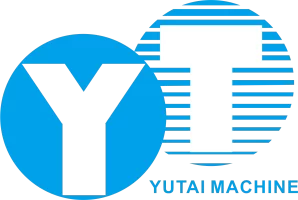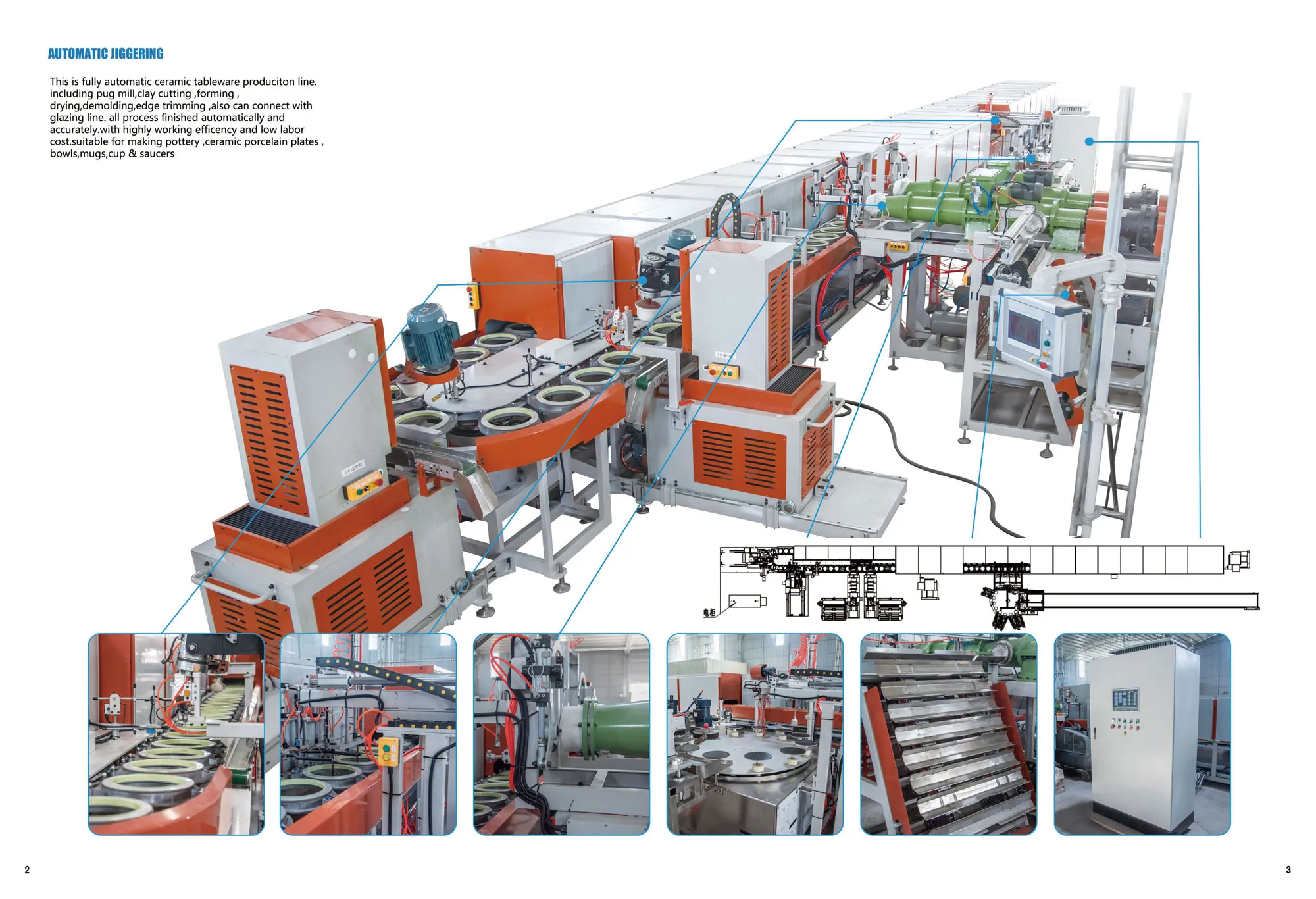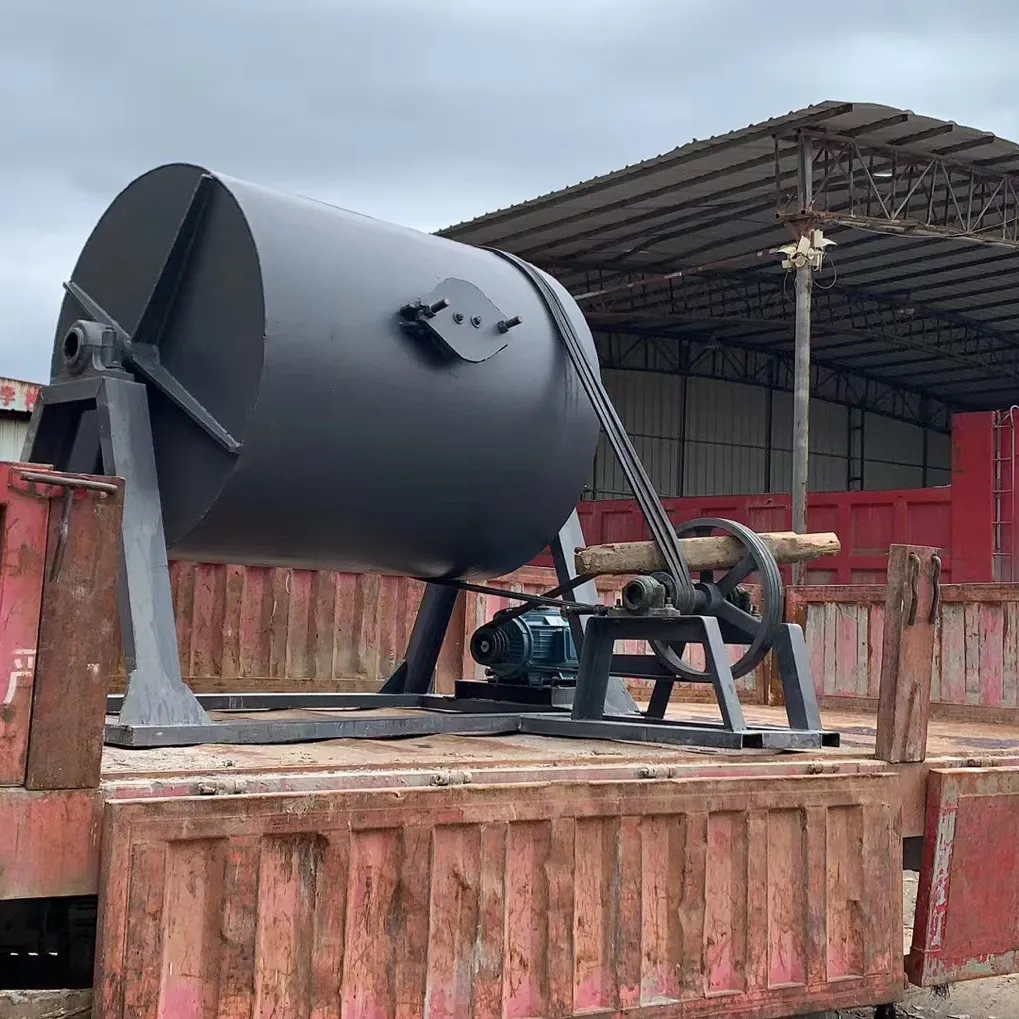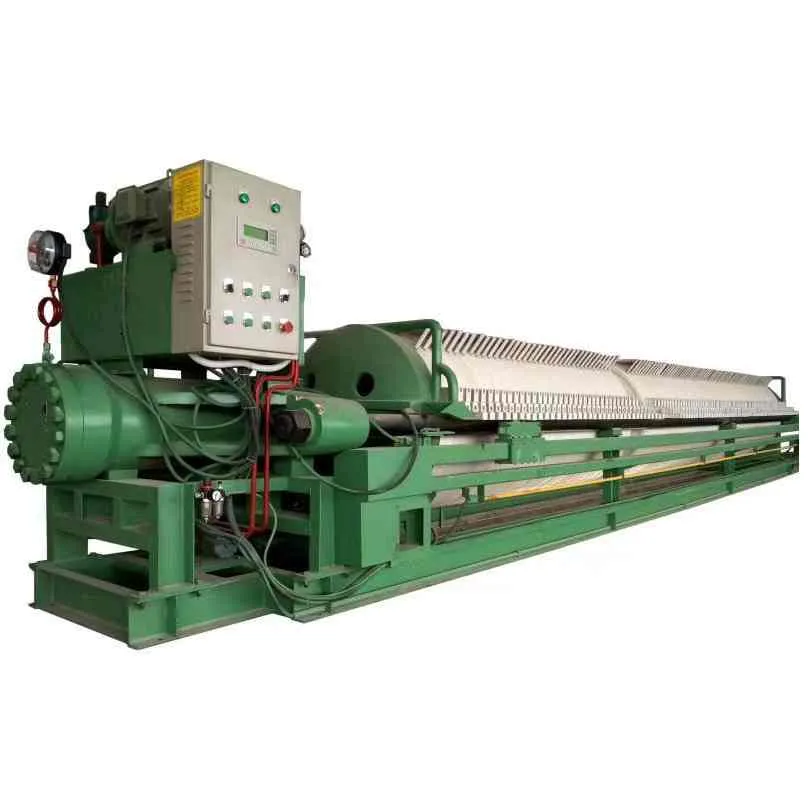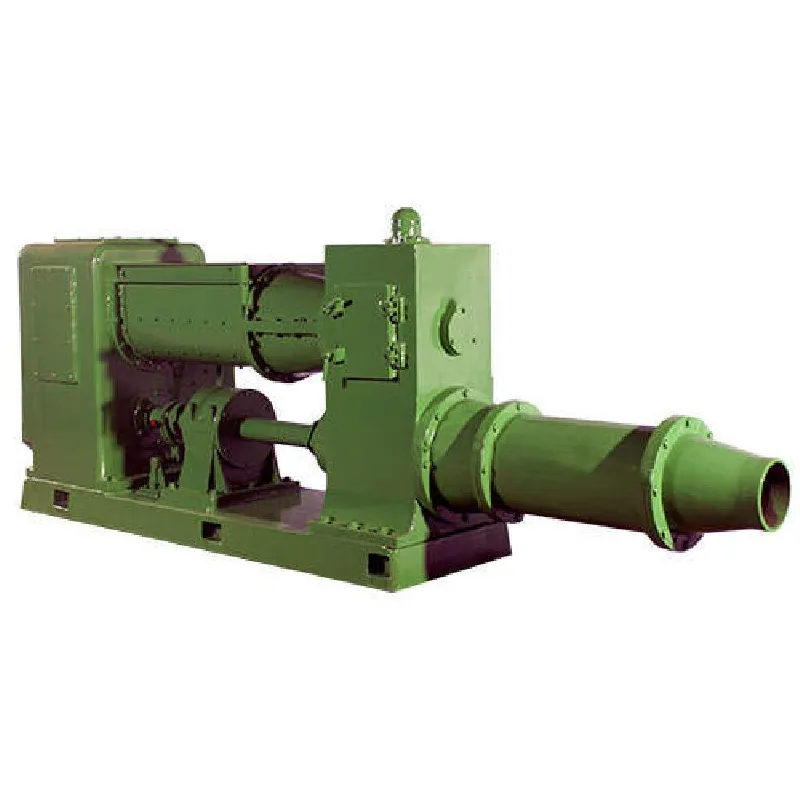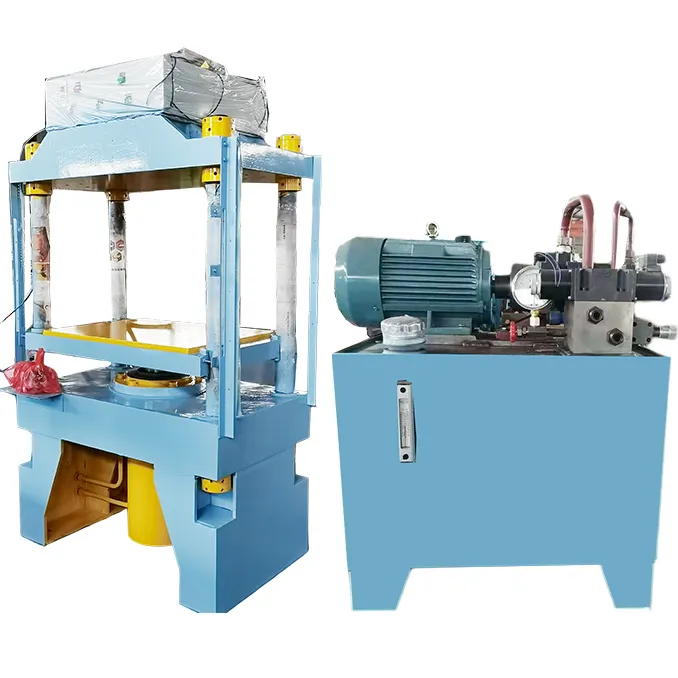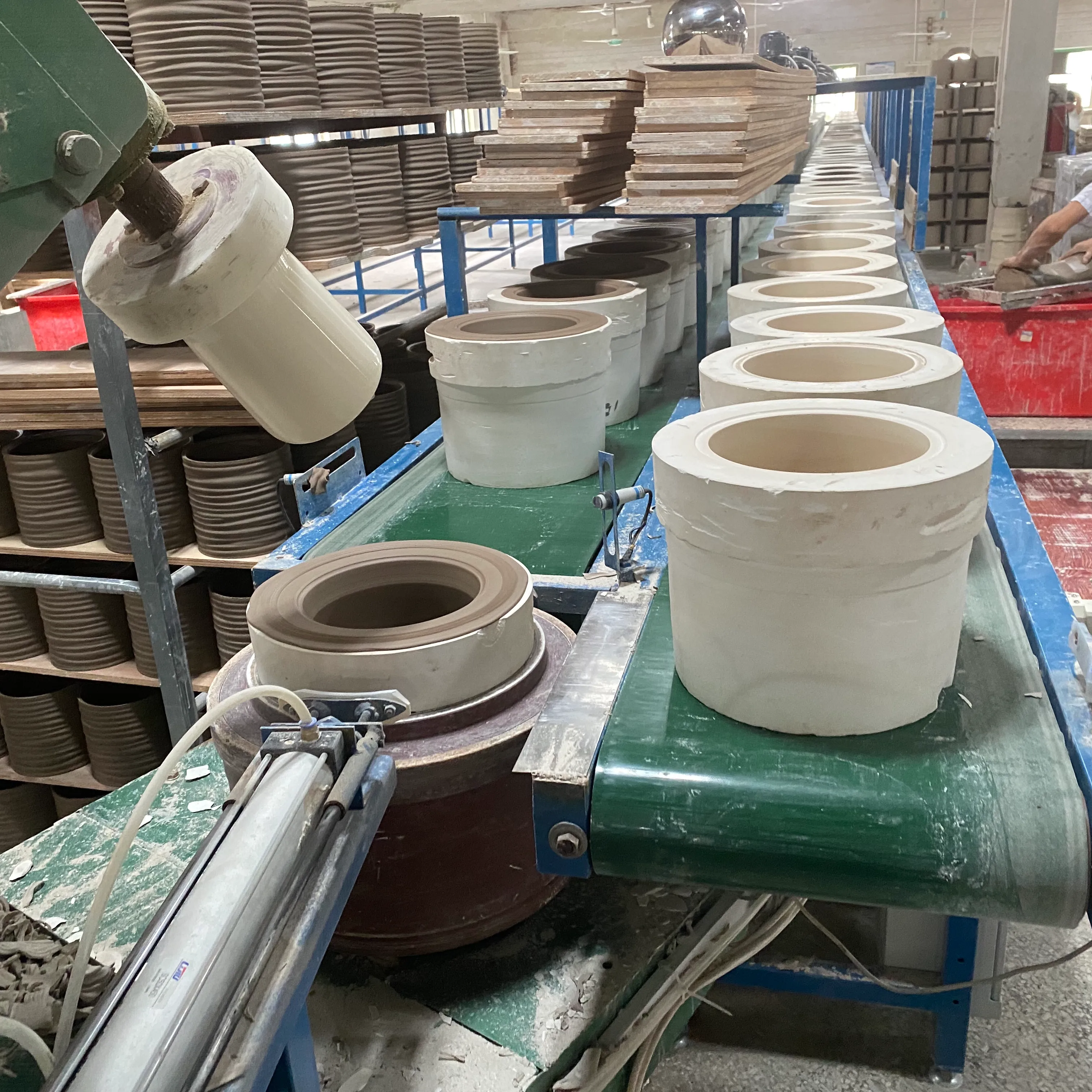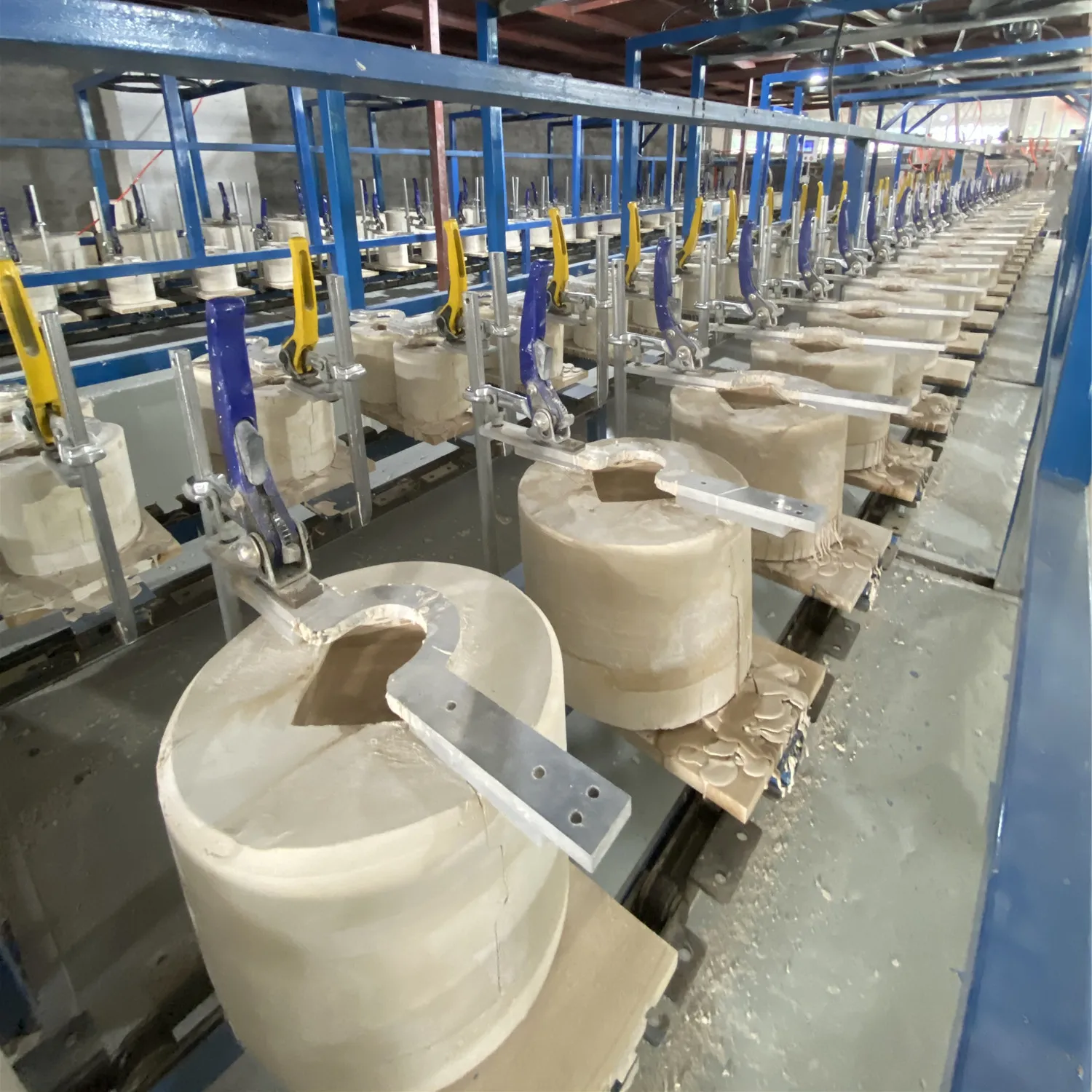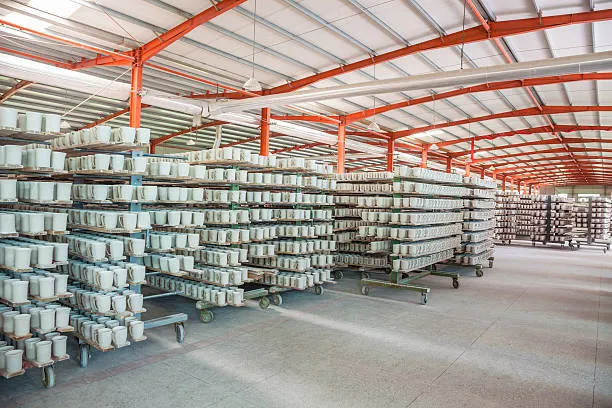
경제적 영향력으로 인해 각국, 특히 개발도상국에서는 현지 세라믹 생산 시설을 설립하게 되었습니다. 전통적으로 거래되던 도자기는 비용을 절감하고 수익을 높이기 위해 점점 더 많은 현지 생산으로 진화하고 있습니다. 따라서 세라믹 기계 제조업체 15년 이상의 경험을 바탕으로 이 블로그를 통해 세라믹 생산 공장을 처음부터 설립하는 방법을 안내해드립니다.
세라믹 생산 공정 이해
우선, 세라믹 공장의 건설에 도움이되는 세라믹의 생산 과정에 대한 간단한 이해가 필요하지만 후속 인신 매매를 수행하는 방법도 도움이 될 것입니다. 요컨대, 도자기 생산은 "점토의 제조 및 정제 - 비스킷의 성형 및 수리 - 비스킷의 유약 - 비스킷의 소성 - 완료". 이러한 여러 단계가 하나의 공정에 결합되어 있으며 각 단계는 서로 다른 세라믹 제조에 따라 세분화되어 서로 다른 것을 필요로 합니다. 따라서 생산 목표 범위를 정의하는 것은 처음에 결정해야 할 사항입니다. (다음은 세라믹 자동 생산 라인의 세라믹 생산 방법 동영상입니다).
세라믹 생산 규모 확장
생산량을 확장할 때 제조업체는 여러 가지 요소를 고려해야 합니다:
- 용량 계획: 수요 예측을 평가하고 생산량 측면에서 필요한 용량을 결정합니다.
- 초기 자본금 마련: 포괄적 인 예산과 합리적인 자금 할당, 안정적이고 신뢰할 수있는 자금 출처 보장, 사용 효율성 향상, 감독 강화, 위험을 충분히 고려하고 자금의 반환 계획을 수립합니다.
- 위치 고려 사항: 원자재와 시장에 대한 접근성을 최적화할 수 있는 위치를 선택하세요. 현지 노동 시장, 운송 물류, 에너지 공급, 규제 환경을 고려하세요.
- 원자재 공급: 원자재 가격을 고려하여 해당 국가 또는 인접 지역에 점토 공급원이 확립되어 있는지 평가할 필요가 있습니다. 원자재 생산지와 가깝거나 공급망이 잘 구축된 지역을 선택하면 원자재 비용을 절감하는 데 도움이 됩니다.
- 국가 및 지역 정책: 세라믹 공장을 건설할 때는 토지 계획, 환경 보호 정책, 노동법 및 규정 등 현지 법률, 규정 및 정책을 준수해야 합니다.
- 레이아웃 디자인: 시설의 레이아웃은 자재의 효율적인 흐름을 촉진해야 합니다. 원자재 보관, 생산 라인, 소성 가마 및 배송 구역을 위한 별도의 구역을 계획하는 것이 필수적입니다.
- 효율성 업그레이드: 가능한 경우 프로세스를 자동화하여 생산 속도와 일관성을 높입니다.
- 품질 관리: 생산량 증가로 인해 제품 품질이 저하되지 않도록 엄격한 품질 관리 조치를 시행합니다.
세라믹 제조 시설 계획
올바른 장비에 투자하는 것은 운영의 성공을 위해 필수적입니다. 생산 공정에 필요한 모든 장비와 그 역할에 대해 자세히 설명하겠습니다.
자동 세라믹 성형 장비
대량 생산의 경우 자동화된 성형기를 사용하면 인건비를 대폭 절감하고 일관성을 향상시킬 수 있습니다. 대규모 세라믹 생산 공장에는 넓은 부지 또는 여러 개의 고층 건물이 필요하며, 생산을 위한 대형 전자동 세라믹 생산 기계가 필요합니다. 중소 규모의 세라믹 공장에는 이러한 조건이 필요하지 않으며 반자동화된 기계나 노동력만으로 목표를 달성할 수 있습니다.
각 생산 단계마다 다른 세라믹 장비
점토 만들기 기계: 볼 밀, 진동 체s, 철분 제거제, 피스톤 펌프, 필터 프레스, 플러그 밀및 점토 절단기.
클레이 만들기 기계의 작동 원리:
먼저 볼 밀을 사용하여 원시 모래를 곱게 분쇄하고 진동 체를 사용하여 큰 입자를 제거합니다. 그런 다음 철 제거 기계를 통해 철 불순물을 제거합니다. 처리된 슬러지는 깊은 탱크에 넣어 슬러지에서 물을 분리합니다. 분리가 완료되면 필터 프레스로 진흙을 압축하여 밀도가 높은 진흙 케이크를 형성합니다. 그런 다음 플러그 밀에서 추가 가공하여 긴 진흙 조각으로 변환합니다. 마지막으로 정밀한 클레이 커팅 머신 작업을 통해 머드 스트립을 균일한 크기의 머드 케이크로 자릅니다. 이렇게 정교하게 성형된 케이크는 세라믹 생산에 사용되는 핵심 원료인 점토입니다.
점토 성형 기계: 세라믹 프레스 기계, 반자동 지거 기계, 완전 자동 지거링 머신, 슬립 캐스팅 기계
점토 성형기의 작동 원리:
일반적으로 대부분의 도자기는 다음을 통해 생산됩니다. 지깅 머신진흙을 세라믹 몰드에 넣고 기계를 시작하면, 꺼내서 말린 후 모양이 잡힌 세라믹 진흙의 머리 부분으로 굴려서 말릴 수 있습니다.
반자동 지거 기계 는 이 단계만 롤링하기 때문에 생산량이 적고 작업자가 중단 없이 금형을 해체하고 교체해야 합니다. 그리고 완전 자동 지거링 머신 점토, 절단, 압연, 건조 및 기타 링크의 연습을 포함하고 있으며, 새로운 점토 스트립을 채우기 위해 고정 된 기간에만 금형 해체 및 변경 및 건조 시간을 제거하고 인력의 링크를 절약하여 생산량이 더 높고 생산량이 더 안정적입니다.
또한 모든 종류의 모양의 도자기와 손잡이를 포함한 모든 종류의 도자기에 대한 또 다른 생산 방법이 있습니다. 슬립 캐스팅 기계. 그라우팅은 닫힌 몰드에 슬러리를 직접 주입한 다음 몰드가 정지한 후 몰드를 제거하여 성형된 세라믹을 꺼내는 공정으로, 주로 변기 생산에 사용됩니다.
이 경우 슬립 캐스팅 기계와 반자동 기계는 저렴하고 전자동 슬립 캐스팅 기계와 롤링 기계는 더 비싸므로 필요에 따라 기계를 선택해야 합니다.
글레이징 기계자동 세라믹 유약 기계, 유약 침지 기계, 유약 스프레이 부스, 유약 닦는 기계
킬른: 셔틀 가마, 터널 가마, 롤러 가마, 소형 세라믹 가마 등 특정 제품 요구 사항에 맞는 가마를 선택하세요.
결론
이 시리즈에 대한 소개가 끝나면 세라믹 생산 공정과 기계의 다양한 단계를 이해하는 데 필요한 희망에 대한 합리적인 평가를 할 수 있다고 생각합니다. https://yutaimachinery.com/, 이메일 및 당사와의 연락, 우리는 고객이 소유 한 세라믹 생산 공장을 설립하기 위해 처음부터 고객을 실현하는 데 도움을줍니다. 제 기사를 읽어 주셔서 대단히 감사 드리며 좋은 하루 되시길 바랍니다.
